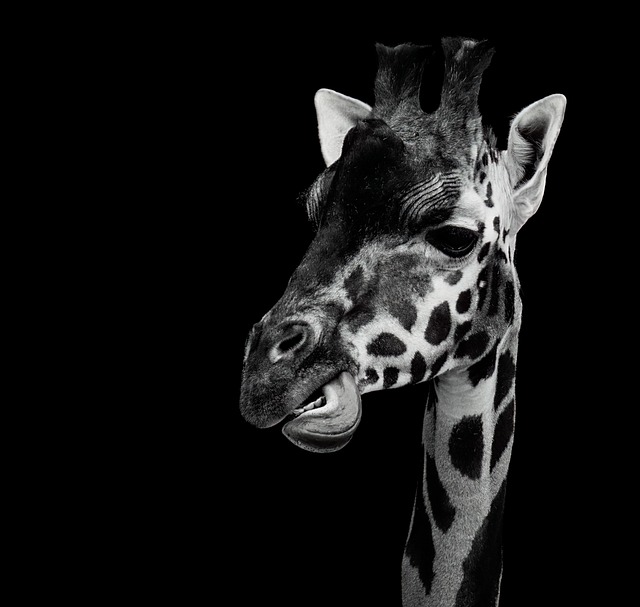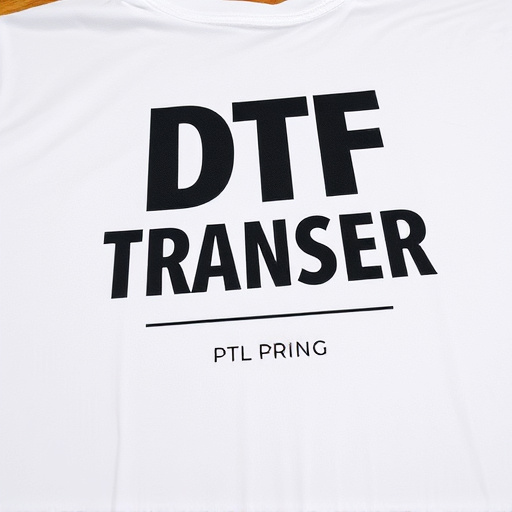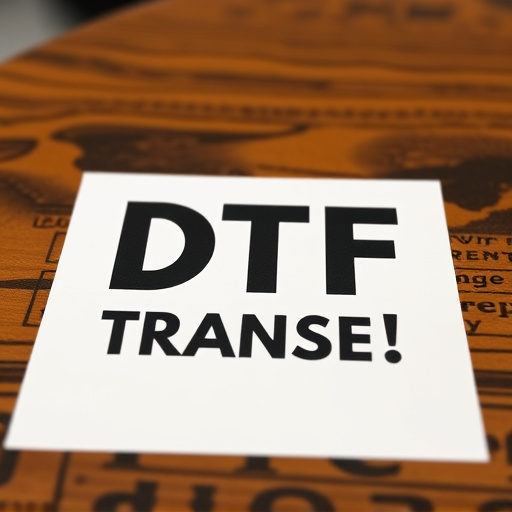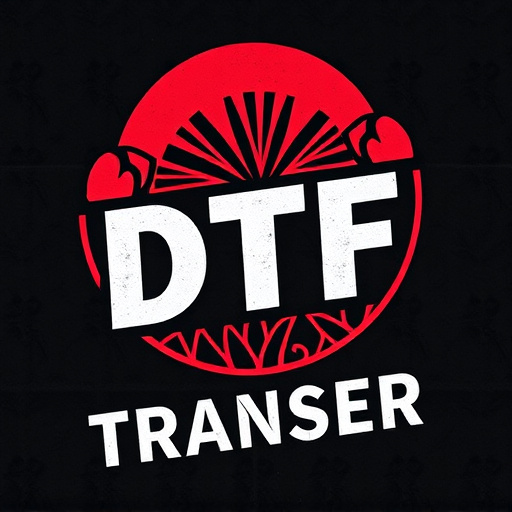DTF Transfers (Direct-to-Film) offer superior durability and quality in printing, ideal for outdoor signage, apparel, and industrial uses. DTF technology applies designs directly to fabrics using advanced inks and heat pressure, resulting in vibrant, long-lasting prints resistant to fading and cracking. This method is widely adopted in textiles, advertising, and fast food industries for high-quality, indelible prints. Best practices for storage and maintenance ensure DTF prints maintain their integrity. Case studies demonstrate successful integrations, encouraging businesses to leverage DTF Printing for sustainable branding solutions.
“Discover the revolutionary power of DTF (Direct-to-Film) transfers for commercial applications. This comprehensive guide explores the game-changing technology behind DTF printing, offering unparalleled durability and versatility. From material science insights to diverse industry applications, we delve into the key advantages and best practices.
Uncover how DTF prints withstand the test of time, enhance product longevity, and drive innovation across sectors. Join us as we navigate the world of DTF transfers, from understanding their fundamentals to celebrating real-world success stories.”
- Understanding DTF Transfers: A Comprehensive Overview
- Key Advantages of DTF Technology for Commercial Use
- Material Science Behind DTF Prints and Their Durability
- Applications of DTF Transfers in Various Industries
- Ensuring Longevity: Best Practices for DTF Printing
- Case Studies: Successful Implementaion of DTF Transfers
Understanding DTF Transfers: A Comprehensive Overview
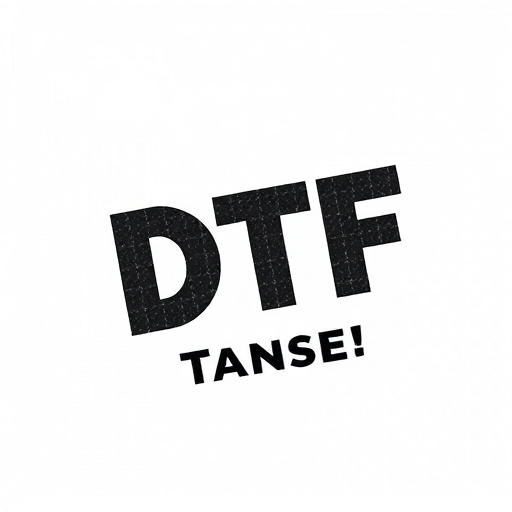
Understanding DTF Transfers is essential in today’s commercial landscape where durability and quality are paramount. A DTF (Direct-to-Film) Transfer is a printing process that directly applies design elements onto various surfaces, offering superior longevity compared to traditional methods. This technique involves precisely transferring inks from a film or master to a substrate, such as fabric, metal, or wood, resulting in vibrant and long-lasting DTF prints.
The key advantage of DTF Transfers lies in their ability to withstand harsh conditions, including sunlight exposure, weathering, and frequent handling, making them ideal for outdoor signage, apparel, and industrial applications. This technology leverages advanced printing technologies and high-performance inks to ensure that designs remain clear, vivid, and durable over extended periods, providing businesses with a reliable solution for creating visually appealing and long-lasting products.
Key Advantages of DTF Technology for Commercial Use

The Direct to Fabric (DTF) technology offers a myriad of advantages for commercial applications, making it a game-changer in the printing industry. One of its key benefits is extended durability; DTF transfers are designed to withstand rigorous use and exposure to various elements, ensuring that printed designs maintain their vibrancy and integrity for longer periods. This longevity is particularly valuable for commercial entities aiming to create long-lasting marketing collateral or branded apparel.
Moreover, DTF Printing provides an efficient and versatile solution. The process allows for high-quality, detailed prints on a wide range of fabrics, catering to diverse commercial needs. From promotional merchandise to custom clothing, DTF Transfer enables businesses to achieve exceptional results with ease. Its ability to produce durable, long-lasting prints without compromising on quality makes it an attractive option for companies seeking to create impactful and enduring marketing materials or apparel.
Material Science Behind DTF Prints and Their Durability
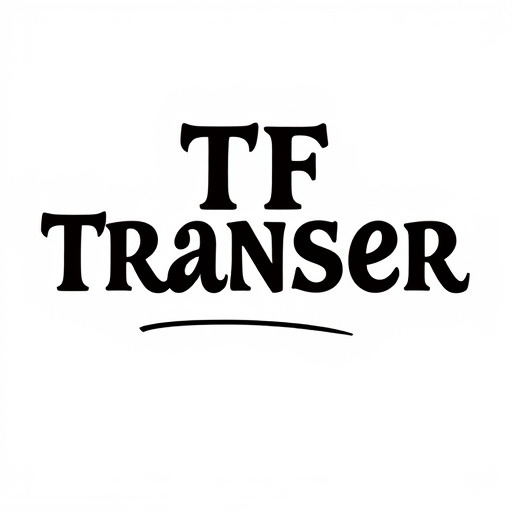
The Material Science Behind DTF Prints and Their Durability
Direct to fabric (DTF) printing is a game-changer in the world of commercial applications, offering extended durability and exceptional versatility. This cutting-edge technology leverages advanced material science to create long-lasting transfers that enhance the look and feel of various fabrics. DTF Transfers are designed to withstand rigorous use, making them ideal for everything from uniforms and apparel to flags and banners.
The secret lies in the intricate process of DTF Printing itself. It involves precisely applying heat and pressure to transfer highly durable inks onto the fabric’s surface. These inks are carefully formulated to bond strongly with the material, ensuring that colors remain vibrant and designs maintain their integrity even under demanding conditions. This robust construction allows DTF Prints to resist fading, peeling, or cracking, providing a testament to their superior durability in both indoor and outdoor environments.
Applications of DTF Transfers in Various Industries
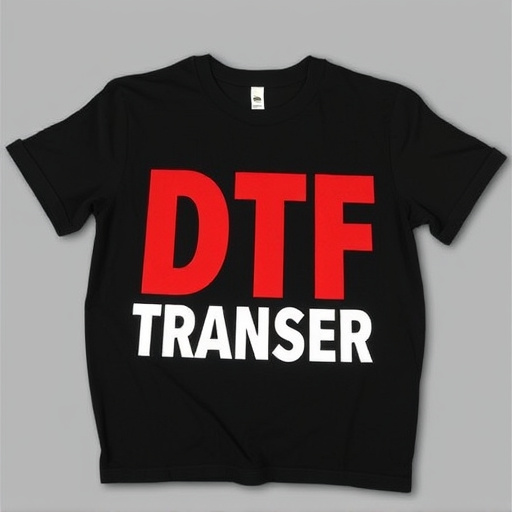
In various industrial sectors, DTF Transfers (Direct-to-Fabric Transfers) have found extensive applications due to their superior durability and versatility. These transfers are a game-changer when it comes to enhancing the longevity of garments and materials in commercial settings. For instance, in the textile industry, DTF Printing is utilized for creating high-quality, long-lasting designs on t-shirts, hoodies, and other apparel, making them suitable for everyday wear or promotional merchandise.
Moreover, DTF Transfers excel in demanding environments like outdoor advertising, where they are used to print durable signs and banners that withstand harsh weather conditions. Their ability to produce vibrant, indelible DTF prints ensures these materials remain visible and effective for extended periods. This technology is also making waves in the fast-food industry, providing long-lasting menus and promotional materials that resist fading or damage, enhancing the customer experience.
Ensuring Longevity: Best Practices for DTF Printing

Ensuring Longevity: Best Practices for DTF Printing
When it comes to commercial applications, the durability of transfers is paramount. Digital Thermal Transfer (DTF) printing offers a reliable solution with extended longevity. To maximize the lifespan of DTF prints, several best practices should be adopted. Firstly, using high-quality materials from reputable manufacturers ensures consistent performance and resistance to fading and cracking over time. Additionally, optimizing print settings, including temperature and pressure, plays a crucial role in achieving long-lasting results.
Proper storage conditions are another critical factor. Storing DTF transfers in cool, dry places, away from direct sunlight and heat sources, prevents premature degradation. Furthermore, regular cleaning and maintenance of printing equipment can significantly extend the life of DTF prints by minimizing buildup and ensuring optimal performance. Following these practices ensures that DTF transfers maintain their vibrancy and integrity for years to come, making them an excellent choice for commercial needs.
Case Studies: Successful Implementaion of DTF Transfers

The successful integration of DTF Transfers in commercial applications has been well-documented through various case studies. These implementations highlight the durability and versatility of Direct to Forme (DTF) printing technology. For instance, a leading packaging company adopted DTF for their product labels, replacing traditional methods. The results were remarkable; DTF prints offered superior adhesion and resistance to fading over time, ensuring product information remained legible even under harsh environmental conditions. This shift not only enhanced the overall aesthetics of their packaging but also improved brand recognition.
Another notable case involves a prominent signage manufacturer who utilized DTF Transfer for creating long-lasting outdoor advertisements. The company’s decision was motivated by the need for vibrant, durable prints that could withstand exposure to varying weather conditions. DTF Transfer met and exceeded these expectations, providing vivid colors and intricate details even after extensive use. This successful adoption has since encouraged many businesses to explore DTF Printing as a sustainable and cost-effective solution for their branding needs.




